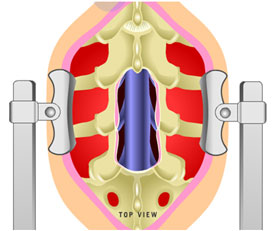Laminectomy is a surgical procedure which is known and used over the last few decades and is still used today. It involves a posterior (through the back ) approach, where the spinal canal and the nerves within it is surgically decompressed (widened) by removal of bone (spinous process and lamina), thickened fibrous tissue (ligaments) and sometimes disc material. This can be done as a pure decompression or as part of a spinal fusion in cases of instability (spondylolisthesis).
A common reason for such an operation would be a narrow spinal canal (canal stenosis) which typically causes symptoms known as neurogenic claudication.
Claudication is a collection of symptoms including: reduced walking distance requiring frequent stops or breaks, heaviness in one or both legs, reduced feeling/ sensation in lower limbs aggravated by walking or longer standing but improving in sitting or lying down. Leg cramps and lower back pain may also occur.
Occasionally bladder and bowel dysfunction can be present too.
Symptomatic Lumbar canal stenosis is a typical age related (degenerative) problem. Only infrequently it is found in younger persons as a congenital condition.
Operation is done under general anaesthesia in a prone position. Depending on the number of levels such an operation will take between one and two hours to complete.
Mobilisation postoperatively is possible as early as the next day. A hospital stay between 2 and 5 days is usual.
Serious complications a rare and include wound infection, spinal fluid leak, nerve damage. 10-20% of patients may require further surgery because of delayed instability (spondylolisthesis).
